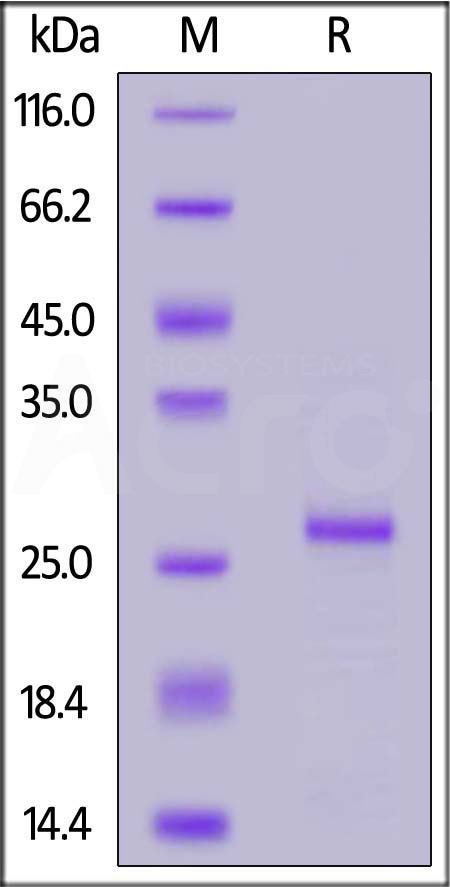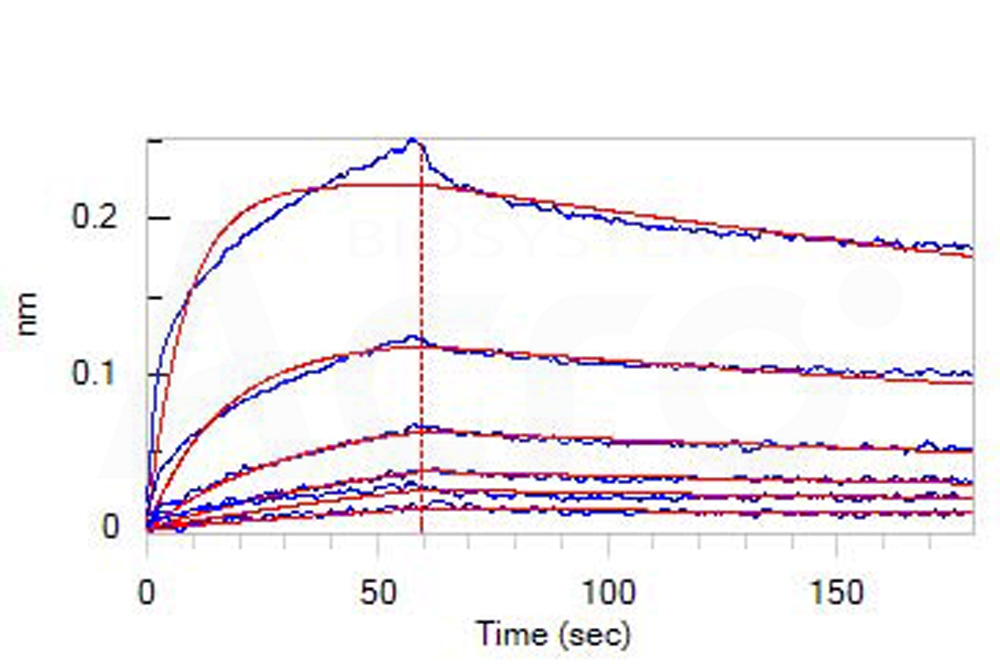分子别名(Synonym)
FGF19,FGF-19,Fibroblast growth factor 19
表达区间及表达系统(Source)
Human FGF19, His Tag (FG9-H51H3) is expressed from E. coli cells. It contains AA Leu 25 - Lys 216 (Accession # O95750-1).
Predicted N-terminus: Met
Request for sequence
蛋白结构(Molecular Characterization)

This protein carries a polyhistidine tag at the C-terminus.
The protein has a calculated MW of 23.4 kDa. The protein migrates as 28 kDa under reducing (R) condition (SDS-PAGE).
内毒素(Endotoxin)
Less than 1.0 EU per μg by the LAL method.
纯度(Purity)
>95% as determined by SDS-PAGE.
制剂(Formulation)
Lyophilized from 0.22 μm filtered solution in PBS, 0.3 M NaCl, 0.3 M Arginine, pH7.4. Normally trehalose is added as protectant before lyophilization.
Contact us for customized product form or formulation.
重构方法(Reconstitution)
Please see Certificate of Analysis for specific instructions.
For best performance, we strongly recommend you to follow the reconstitution protocol provided in the CoA.
存储(Storage)
For long term storage, the product should be stored at lyophilized state at -20°C or lower.
Please avoid repeated freeze-thaw cycles.
This product is stable after storage at:
- -20°C to -70°C for 12 months in lyophilized state;
- -70°C for 3 months under sterile conditions after reconstitution.
电泳(SDS-PAGE)

Human FGF19, His Tag on SDS-PAGE under reducing (R) condition. The gel was stained with Coomassie Blue. The purity of the protein is greater than 95%.
活性(Bioactivity)-BLI

Loaded Human FGF R4, Fc Tag (Cat. No. FG4-H5253) on Protein A Biosensor, can bind Human FGF19, His Tag (Cat. No. FG9-H51H3) with an affinity constant of 63.5 nM as determined in BLI assay (ForteBio Octet Red96e) (QC tested).
Protocol

Loaded Human FGF19, His Tag (Cat. No. FG9-H51H3) on HIS1K Biosensor, can bind Human FGF R4, Fc Tag (Cat. No. FG4-H5253) with an affinity constant of 16.6 nM as determined in BLI assay (ForteBio Octet Red96e) (Routinely tested).
Protocol
背景(Background)
Fibroblast growth factor (FGF)19 is the first members of a new subfamily of FGFs and could act as hormones. During fetal life, FGF15/19 is involved in organogenesis, affecting the development of the ear, eye, heart, and brain. FGFs–FGFRs are involved in regulation of many biological processes such as embryonic development, cell proliferation, differentiation, and tissue repair. The dysregulation of FGF–FGFR was observed in different types of diseases, disorders, and cancers. Notably, aberrant expression of FGF19/FGFR4 contributes to Hepatocellular Carcinoma progression.























































 膜杰作
膜杰作 Star Staining
Star Staining













